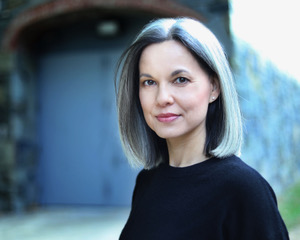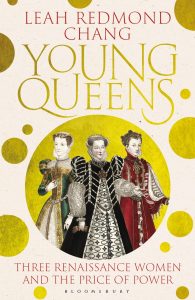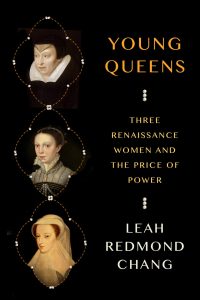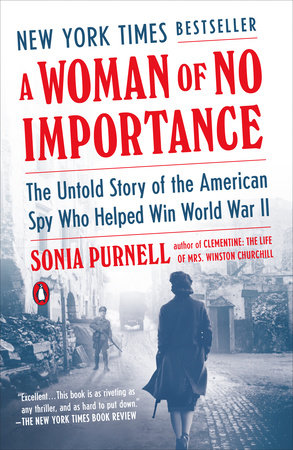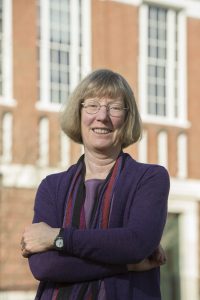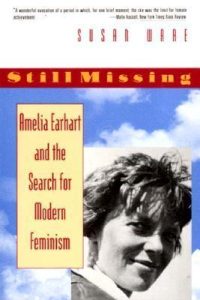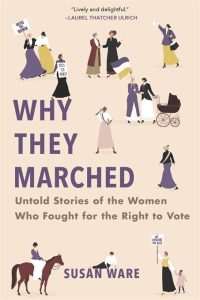Talking About Women’s History: Three Questions and an Answer with Leah Redmond Chang
Leah Redmond Chang is a former Associate Professor of French literature and culture at The George Washington University. Her writing draws on her extensive experience as a researcher in the archives and in rare book libraries. Previous books include Into Print: The Invention of Female Authorship in Early Modern France, which focused on women and book culture in the sixteenth century, and (with Katherine Kong) Portraits of the Queen Mother, about the many public faces of Catherine de’ Medici. Her next book, Young Queens: Three Renaissance Women and the Price of Power, will be published by Bloomsbury in the UK (May 2023) and Farrar, Straus and Giroux in the US (August 2023). She lives with her husband and three children, and divides her time between Washington DC and London.
Take it away, Leah!
In your coming book, Young Queens, you write about three fascinating women. Do you have a favorite among them?
Not an easy question! Young Queens follows the intertwined lives of three sixteenth-century women: Catherine de’ Medici, her daughter Elisabeth de Valois, and her daughter-in-law, Mary Stuart, also known as Mary, Queen of Scots. I like them all for different reasons, but if pressed, I would have to say that Catherine de’ Medici is my favorite. She has an unfair advantage in some ways: Catherine was the power behind the French throne until her death in 1588 at age sixty-nine, whereas her daughter Elisabeth died young at twenty-two years old. Mary, Queen of Scots, as many people know well, fled Scotland at twenty-five only to become the prisoner of Elizabeth I of England. Her imprisonment lasted until her death, at forty-four, in 1587. Perhaps it’s easier for me to like Catherine because she lived the longest and moved around the most, filling many different roles during her lifetime. She also wrote thousands of letters, so we have an incredibly rich record of her life and policies. And yet, she remains less known than a woman like Mary, Queen of Scots. That intrigues me.
Catherine was always a little bit of an underdog – and I love an underdog. An orphan practically from birth, a ‘commoner’ in the eyes of the French nobility, the unloved bride of a second son – certainly as a young woman, she seemed unlikely to become so powerful. Yet it’s the adversity Catherine faced in her youth that made her strong. Catherine was a survivor, unlike Mary, Queen of Scots who, although the ‘it’ girl at the French court during her adolescence, didn’t possess Catherine’s grit. To be fair to Mary, though, in some ways she was set up to fail, and had little reliable support once she returned to Scotland at the age of eighteen. And she made such bad choices. Could she have avoided them? Every time I retrace her story, I kind of wish she could have.
I’ve often wondered what Elisabeth de Valois would have become had she lived beyond the age of twenty-two. She was very close to her mother, and Catherine had trained Elisabeth well. It was clear by Elisabeth’s teen years that she had the talent to develop into a canny political player. The tragedy, from a historian’s perspective, is that she didn’t live long enough to see it through. That she died trying to fulfill a queen’s first duty: to provide an heir for the kingdom. And that she suffered so much trying to be both a good wife and good daughter, queen of one kingdom and royal princess of another.
You can probably sense me weighing my answer here – even as I type this, I’m running through the lives of these women, assessing what appeals to me about them. In the end, though, I still return to Catherine. She was such a complex woman, and her legacy is equally complex. She’s always had a notorious reputation despite the many efforts by scholars to recuperate her image and reveal her astute political mind. From my first encounters with Catherine, I was a bit suspicious of that ‘bad girl’ image. But Catherine wasn’t exactly an innocent victim of baseless calumny, either. She had strengths and she had weaknesses; she did both good and bad things. In short, she was a real human being, with all the baggage that comes from being human. I think that’s what I love about her: in her complexity, Catherine allows us to see the real woman behind the crowned queen.
You are writing about women who were powerful and well-known in their own time. Are there special challenges in researching such women?
There are several challenges, but I’ll focus one here. I consistently run into the problem of reliable evidence. Sixteenth-century Europe was awash in propaganda. A lot of social dynamics and tensions in the sixteenth century will seem familiar to those of us living in the twenty-first: countries torn apart by civil strife, a hardening ‘right’ and ‘left’ with diminishing hopes of breaching the divide, the rapid growth of new technology and media that enabled voices to proliferate in the public sphere, something akin to religious ‘wokeness,’ and many misogynist voices raised against women in power. These are exactly the conditions that encourage the amplification of fake news, especially about a woman who wields any kind of authority. So how do you get to the ‘truth’?
Catherine de’ Medici and Mary Stuart were both fervently adored and deeply despised during their lifetimes. Years ago, when I first started working on Catherine de’ Medici, a scholar warned me that there is no objective account of her. I found this largely to be true: it is very hard to parse fact from fiction both in sixteenth-century sources and in those produced during the centuries that have followed. To a certain extent, the same can be said of Mary. I think any book on either of these queens has to take a historiographical stance: how are you going to tell this story? How does one do justice to these women who have so many ‘lives’ in the sources? Who have taken on such mythical proportions in the cultural imagination that it’s easy to lose sight of them as living, breathing human beings?
Elisabeth de Valois is a slightly different story. She was beloved by her kingdom. No one had anything bad to say about her. But this too can become a problem. Everyone loved her a bit too much – the praise can become a little inflated. Luckily, we have sources that do give us a more rounded, intimate portrait of her – my favorites are letters and accounts by her ladies-in-waiting. And from those letters we also catch a glimpse of Elisabeth’s inner life.
That said, the letters by the ladies-in-waiting were difficult to wade through. Elisabeth was well-educated for a noblewoman in her day; her ladies weren’t always. The spelling! Oh, the spelling! As it was, sixteenth-century French spelling wasn’t codified. But these ladies often spelled phonetically. Sometimes it took me several passes through the letters to figure out what they were saying at all, let alone analyze the nuances of it.
How would you describe what you write?
I write narrative history, with an emphasis on ‘narrative.’ The two books I wrote before Young Queens were quite scholarly, and I really enjoyed researching and writing them. But I’ve always been interested in writing narrative history and exploring how scholarship could be brought to readers through story.
Growing up, I loved history, and I loved fiction. I especially loved books that blurred the line between ‘history’ and ‘fiction’ (as a child, I was obsessed with the ‘Little House’ series for that reason). I still remember my history teacher in 9th grade: at the start of every class, Ms. Smith would come out from behind her desk, perch herself on the edge, and tell us a story. That was her entry into the material, and I would always bring those stories home to the dinner table. In college, I majored in an interdisciplinary program that focused on history, literature, and philosophy, and when it came time to apply to graduate school, I ended up applying to PhD programs in both history and comparative literature. Eventually, I decided to go with comparative literature with the rather naïve idea that I could work in both disciplines under that umbrella. Although that wasn’t entirely the case, comp lit did allow me to think outside of traditional disciplinary boundaries.
As a literature scholar, I have always been very archival in my research. I’ve always wanted to handle the objects of the sixteenth century and to use them to understand the culture and the people. Though I’ve left the university in an official capacity, I’m still archival, but now I’m more focused on trying to capture the inner lives of the people I study and translate those lives to the page. I try to think about story arc and about historical actors as characters. I also like the challenge of working with and around historiographical limitations: how do you create scene and story when you must respect what the archive gives you? To me, that question makes the whole endeavor exciting. I guess you can say that I love the craft.
- The British version
- The U.S. version
(They're both so pretty! )
A question from Leah: Across your books, you cover a lot of ground both geographic and temporal. How do you land on your subjects? What makes you say ‘Yes! This is the woman / women I’m going to write about’?
There is no simple answer to that.
In the case of Women Warriors, the general topic caught my imagination at an early age but I didn’t start thinking about it in an orderly way until years later, when Antonia Fraser’s Warrior Queens came out. After that, it seemed like I ran across examples of historical women who fought everywhere and I started to collect their stories in a casual way. When it was time to write the book, I had hundreds of examples, and I continued to find more as I worked on the book. At that point, it was a matter of making hard choices because I wanted women from different times and different places and who fought for different reasons.
For my current book, the subject literally turned up in my news feed and wouldn’t let go of my imagination.
Ultimately, I think subjects find me.
***
Want to know about Leah Redmond Chang and her work?
Check out her website: leahredmondchang.com
Subscribe to her newsletter: leahredmondchang.substack.com (Consistently interesting <<Pamela sharing an opinion.)
***
Come back tomorrow for three questions and lots of answers with the women who host the Women Who Went Before podcast.
In which I finally read “A Woman of No Importance”
Earlier this month, I was called to jury duty. I must admit, I thought about trying to get out of it on the grounds that I am under deadline on this book.* But I just couldn’t do it. I believe in the importance of the jury system. And I have spent the last few years thinking about the destruction of of the rule of law in Nazi Germany. So, I grumbled about the loss of a day. I prayed that I wouldn’t end up on a jury and lose more than a day. And I thanked the powers that regulate civic duty that I was assigned to a downtown court instead of one in the distant suburbs.
All of which is a long lead-in to the fact that I decided Sonia Purnell’s A Woman of No Importance: The Untold Story of the American Spy Who Helped Win World War II was the perfect thing to read in the jurors’ waiting room. The subject was adjacent to what I’m working on, but not so close that I needed to take notes. And by all accounts, it was a gripping read.
I am, as is so often the case, late to the game. Many of you may have already read Purnell’s bestselling account of Virgina Hall,** the American woman who talked her way into Britain’s Special Operations Executive (SOE) and was the first Allied woman deployed behind enemy lines—prosthetic leg and all.
A Woman of No Importance is a fascinating biography, with the tone of a thriller. Purnell starts with Hall as, in fact, a woman of no importance who had opted out of the life of a Baltimore socialite and been repeatedly frustrated in her attempts to join the diplomatic corps as more than a secretary. She traces Hall's unlikely acceptance by SOE—in large part because the newly formed agency was desperate—and her invisible rise as a covert operator working with the French resistance in spite of repeated bumbling and failures on the part of SOE.
Because these days I read narrative non-fiction from a writer’s viewpoint,*** I was struck by the skill with which she weaves the larger story of World War II into Hall’s story. She consistently gives the reader the information they**** need, without dumping a chunk of information that disrupts the story line. It is harder to do than you might think.
If you’re interested in World War II, spies, spies in World War II, or forgotten women who did amazing things, this one’s for you.
*Probably not a valid excuse, now that I think about it.
**After all, lots of people reading (or at least buying) a book is what makes a book a best-seller.
***A habit I hope to ditch after I recover from writing the current book. It may require serious rehab involving sitting on the rear deck with a pitcher of ice tea, a stack of really well-written books, and no way to make notes in the margins.
****I hear some of you screaming and getting ready to send me emails about this usage. The big style manuals all gave their blessing to the use of they as an indefinite singular pronoun several years ago. If it’s good enough for the Chicago Manual of Style, it’s good enough for me.
* * *
Come back on Monday for three questions and an answer with historian Leah Chang.
Talking About Women’s History: Three Questions and an Answer with Susan Ware
A pioneer in the field of women’s history and a leading feminist biographer, Susan Ware is the author and editor of numerous books on twentieth-century U.S. history. Educated at Wellesley College and Harvard University, she has taught at New York University and Harvard, where she served as editor of the biographical dictionary Notable American Women: Completing the Twentieth Century (2004). Ware has long been associated with the Schlesinger Library at the Harvard Radcliffe Institute, most recently as the Honorary Women’s Suffrage Centennial Historian. From 2012-2022 she served as the general editor of the American National Biography. She is currently writing a book about feminist biography and preparing two volumes on Eleanor Roosevelt for the Library of America.
Take it away, Susan!
You are one of the second wave feminist historians who helped create women’s history as an academic discipline. What sparked that interest for you? And did you face institutional challenges in addition to all the other challenges that confront someone writing about women in the past?
My interest in history was sparked by growing up as a voracious reader—I always had a book in my hands (still do). My interests vacillated between literature and history but in college I tilted towards history. This was the late 1960s, so it was very much “men’s” history, even at the women’s college I attended. But in 1970 I became aware of the powerful ideas of modern feminism, which caused me to ask “where are the women in history?” I never looked back. One institutional difference between my career and those of other, slightly older second-wave women’s historians is that they often started their careers in another field like Russian history (Linda Gordon), diplomatic history (Blanche Wiesen Cook), or colonial history (Linda Kerber) and then switched to women’s history, whereas I applied to graduate school in 1972 with the stated purpose of studying women. Why Harvard admitted me given their hostility to women’s history then and for many years after (talk about a chilly academic climate!) has always been a puzzle, but I thrived once I discovered the resources of the Schlesinger Library at Radcliffe and found mentors like Barbara Miller Solomon. Fifty years later I’m still at it.
You've written about a lot of interesting women. Do you have a favorite?
When Martha Graham was asked her favorite role, she would reply “the one I am dancing now.” Babe Didrikson Zaharias said the same thing about sports. I have always felt that way about my subjects, especially the biographical ones: my favorite is the one I am writing about now. But if I had to choose, it would be Amelia Earhart. I published Still Missing: Amelia Earhart and the Search for Modern Feminism thirty years ago and yet whenever I am asked to talk about her, I find myself just as excited and engaged as when I was researching the book. This is a good thing, actually, because I still am fielding calls, requests for interviews and lecture invitations on Earhart on a regular basis – and probably will until they find her plane. Such is her enduring hold on popular culture, whose coattails I have been delighted to ride.
For a book like Why They Marched, in which you look at a group of women, how did you chose which women to include?
Why They Marched, my recent book on the women’s suffrage movement timed to the centennial of the Nineteenth Amendment, is a collection of nineteen portraits (the actual term is prosopography, but that’s too much of a mouthful) designed to capture the experiences of rank-and-file suffragists who made the vote happen in localities across the country. Biography –telling stories – is a perfect way to make the history come alive. I steered clear of national leaders (although I did include Susan B. Anthony) and tried to chose a range of subjects who represented the broad diversity of the movement in terms of chronology, geography, race, class, sexual identity and age. In addition I wanted to include a male suffragist as well as a female anti-suffragist. It was one huge balancing act but great fun too. Many of the subjects had some connection to the Schlesinger Library at Radcliffe, which has been my go-to library since graduate school. In many ways Why They Marched is a love letter thanking the Schlesinger Library for what it has meant to my career.
A question from Susan: During an intense few months in 1970 I was introduced to the powerful ideas of modern feminism by reading Betty Friedan’s The Feminine Mystique, Simone de Beauvoir’s The Second Sex, and Doris Lessing’s The Golden Notebook. Have you ever had a comparable life-changing feminist experience?
I was thirteen, going on fourteen, in 1972. I had already had the confusing experience of people telling me, on the one hand, that I was smart enough to do anything I wanted and, on the other hand, that there was a whole universe of things I couldn’t do because I was a girl. Then, seemingly all at once, the world changed with the passage of the Civil Rights Act, and Title XI in particular. For a brief, giddy time it seemed like anything was possible. That all the doors were open. I soon learned that wasn’t true: that some doors were still closed, and others were nominally open but had gatekeepers intent on keeping me from coming through them. But I never lost that sense of possibility—and I developed a taste for hip-checking my way through closed doors.
***
Want to know more about Susan Ware and her work? Check out her website at https://www.susanware.net/
***
Tomorrow it will be business as usual here on the Margins with a women’s-history- related blog post from me. But we’ve still got more people talking about women’s history from a lot of different angles next week. Don’t touch that dial!
